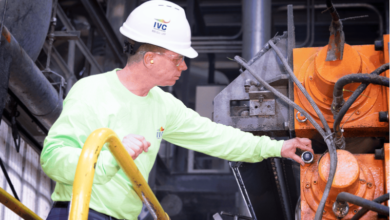Ultimate Guide to Understanding Cobot and Their Applications

A cobot is a collaborative robot designed to work safely alongside human operators, bringing automation, precision, and efficiency to various industries. Unlike traditional industrial robots, cobots are easier to program, flexible in application, and ideal for enhancing productivity without replacing human workers.
In this article, “Ultimate Guide to Understanding Cobot and Their Applications,” we’ll explore what cobots are, their key features, and how they’re being used across manufacturing, healthcare, logistics, and more.
What Is a Cobot?
A collaborative robot, or cobot, is a type of industrial robot designed to work safely alongside humans in the same workspace. Unlike traditional industrial robots, which often operate behind safety barriers, cobots have built-in safety features that let them work closely with people without the need for extensive protective enclosures.
Key Features of Cobots
Safety
Cobots have advanced safety features to protect human workers. Sensors detect unexpected contact and automatically slow down or stop the robot to prevent injuries. Collision detection systems using cameras and sensors help cobots spot obstacles and adjust their movements. They also comply with international safety standards, ensuring safe and reliable interaction between humans and robots.
Ease of Use
Cobots are designed to be simple and user-friendly. They feature drag-and-drop programming, making setup quick even for beginners. Operators can hand-guide the robot through tasks, which the cobot can then learn and repeat. Some cobots can also watch a human perform a task and then perform it autonomously.
Flexibility
Cobots are highly adaptable and can perform a variety of tasks in different work environments. They can be quickly reprogrammed for new jobs, making them ideal for changing production needs. Their compact design allows them to fit easily into existing workflows, and they can work with many types of equipment across different applications.
Efficiency and Productivity
Cobots enhance overall performance by working continuously without fatigue, completing tasks efficiently. Their precision reduces errors and improves product quality. By handling repetitive jobs, cobots free human workers to focus on more complex and valuable tasks, making workflows smoother and more productive.
Data Integration
Cobots easily integrate into modern “smart” factories. They work with Industry 4.0 systems, using sensors and connectivity to gather and analyze data. With IoT technology, cobots can be monitored and controlled in real time. They also help predict maintenance needs by spotting potential problems early, reducing downtime.
Cobots combine safety, ease of use, flexibility, efficiency, and smart data integration. They are transforming modern manufacturing and production by making human-robot collaboration safer, easier, and more productive.
See also: Clinical Decision Support AI Agents: Seamless Integration with Epic, Cerner, and Meditech
Industrial Applications of Cobots
Cobots are robots designed to work safely alongside humans, improving efficiency, safety, and flexibility across various sectors. Here’s how they are applied in key industries:
Manufacturing
In manufacturing, cobots help with tasks such as welding, assembly, packaging, inspection, material handling, and machine tending. They can perform repetitive and precise jobs consistently, which boosts productivity and ensures high-quality products. By reducing human errors and fatigue, cobots help minimize defects and waste.
Cobots are designed with safety features like sensors and collision detection, allowing them to work safely alongside human operators. They are also easy to reprogram for new tasks, making them flexible for both small and large production runs. This adaptability helps manufacturers respond quickly to changing demands.
Healthcare
In healthcare, cobots are used in several areas to improve efficiency, accuracy, and safety:
- Laboratory Assistance: Cobots automate repetitive tasks such as sample preparation, testing, and analysis, freeing healthcare workers to focus on more critical activities like diagnosis and patient care.
- Pharmaceutical Packaging: Cobots handle packaging tasks with high precision, ensuring accuracy and compliance with strict regulatory standards.
- Surgical Support: Cobots assist surgeons with delicate and precise tasks during procedures, enhancing patient safety, improving outcomes, and reducing the risk of errors.
Cobots help healthcare facilities increase efficiency, maintain high-quality standards, and support medical staff in delivering better patient care.
Logistics and Warehousing
In logistics and warehousing, cobots help make operations faster, easier, and more efficient. They automate tasks like picking, sorting, packing, and palletizing, which speeds up workflows and reduces worker fatigue. For inventory management, cobots can scan barcodes, track stock, organize items, and keep records accurate.
Cobots also assist in moving goods within warehouses and can support last-mile delivery, helping products reach customers more quickly and at lower cost. By handling repetitive, physically demanding, or precise tasks, cobots increase productivity. Their flexibility and ability to work with existing systems make them valuable tools in modern logistics operations.
Electronics and Precision Industries
In electronics and precision industries, cobots perform tasks like micro-assembly, soldering, testing, and placing Surface Mount Devices (SMDs) on circuit boards. They handle delicate components accurately, reduce defects, and maintain strict quality standards. Cobots also assist with quality control by inspecting products to ensure consistency and reliability, helping manufacturers produce high-quality electronics efficiently.
Cobots are transforming industries by boosting productivity, safety, and flexibility. Their ability to work alongside humans and perform a wide variety of tasks makes them valuable assets for modern industrial operations.
Benefits of Using Cobots Across Industries
Cobots are transforming industries by improving productivity, safety, quality, flexibility, and cost-effectiveness. Here’s how they make a difference:
Boost Productivity and Efficiency
Cobots increase productivity by working continuously without fatigue and handling repetitive or time-consuming tasks. Their flexibility and easy setup with existing systems help work run smoothly, reduce delays, and let human workers focus on more important tasks.
Enhance Safety and Reduce Injuries
Cobots are designed to work safely alongside humans. They have sensors and safety features that detect people and adjust their actions to prevent accidents. They can also take on dangerous or physically demanding tasks, protecting workers from injury.
Ensure Consistent Quality and Precision
Cobots work with high accuracy and can repeat tasks consistently, even for delicate jobs that humans might find tiring. This helps reduce waste and mistakes, improves product quality, and leads to happier customers.
Offer Flexibility and Easy Reprogramming
Cobots are versatile and can be quickly reprogrammed for different tasks. This makes them ideal for small and medium-sized businesses that need adaptable automation. They allow companies to adjust production quickly in response to changing needs.
Cost-Effective with Faster ROI
Cobots are generally more affordable than traditional industrial robots. Their easy integration and user-friendly interfaces reduce the need for extensive training or infrastructure upgrades. Combined with higher productivity, this leads to a faster return on investment.
Their flexibility and affordability make them a practical solution for modern industries seeking smarter, collaborative automation.
Final Thought: Cobots as Essential Partners in Modern and Future Automation
Cobots are emerging as essential partners in today’s and tomorrow’s workplaces. They work safely alongside humans, perform a wide range of tasks, and adapt easily to changing needs. By integrating cobots, businesses can increase speed, efficiency, and safety while allowing workers to focus on creative and high-value activities. This combination supports smarter, more flexible, and more innovative operations, driving productivity and growth in modern industries.




